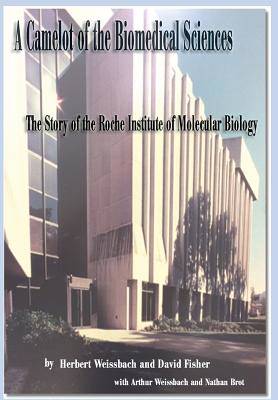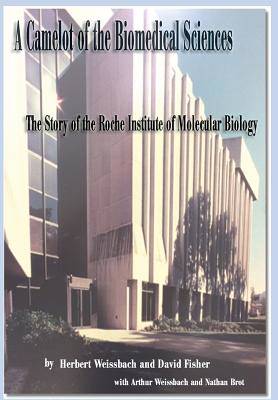
- Retrait gratuit dans votre magasin Club
- 7.000.000 titres dans notre catalogue
- Payer en toute sécurité
- Toujours un magasin près de chez vous
- Retrait gratuit dans votre magasin Club
- 7.000.0000 titres dans notre catalogue
- Payer en toute sécurité
- Toujours un magasin près de chez vous
A Camelot of the Biomedical Sciences
The Story of the Roche Institute of Molecular Biology
Herbert Weissbach, David FisherDescription
A Camelot of the Biomedical Sciences
The Story of the Roche Institute of Molecular Biology
The history of science began with wonder. Its foundation was endless curiosity about the world and people brave enough to ask, what if? How? And why? It began in rudimentary laboratories set up by wealthy men in basements and emptied rooms. The British Royal Academy gave it a formal experimental structure. And for almost two centuries it was the exclusive domain of those wealthy and educated people able to find the time and resources to conduct their experiments. To satisfy their own curiosity. The experimental laboratory is a relatively new invention, established mostly in universities before 1900. But laboratory science began growing with the realization that discoveries made in the lab could become valuable products. Edison proved those things discovered in laboratories had substantial commercial value. In the biomedical field two distinct industries came into creation: the prestigious laboratories and Universities where research was done to expand knowledge and commercial laboratories where it was done for profit. For decades, as the world's pharmaceutical industry developed and prospered in the United States, they remained separate and distinct. And then, in 1967, one of theworld's pharmaceutical corporations, Hoffmann- La Roche changed that world, it created and funded a laboratory for pure scientific research. There had never before been anything like it in the pharmaceutical industry. And this is the extraordinary story of the Roche Institute of Molecular Biology, told in the words of the people who created it. With its substantial profits, especially from the psychopharm- acologic drugs librium and valium, staid Hoffmann-La Roche decided to make a ubstantial investment in the future: It would establish a place where many of the best scientists in the world could work on projects of their own creation -- with guaranteed funding and no requirements to produce results - much less a product. It was a scientific Camelot. Roche began by recruiting several of the most respected scientists at the prestigious National Institutes of Health. The first two men to risk their careers by joining the as-yet nonexistent Roche Institute, Sidney Udenfriend and Herbert Weissbach, with the support of senior management at Hoffmann-La Roche, would build a dream into a world renowned scientific research center. By the time the Roche Institute closed its doors, a victim of the biotech revolution that resulted in numerous entrepreneurial start-ups funded by Wall Street dollars, its scientists had made significant contributions to biomedical research while training many of the next generations of great research scientists. The staff eventually included one Nobel Prize recipient and seven elected members of the National Academy of Science. And equally important, the institute had laid the path that Roche would follow into the future. The history of laboratory science and the Roche Institute is told in these pages by the people who came to work and learn there, with the assistance of HerbWeissbach and best-selling author David Fisher. The work done at the Institute in Nutley, New Jersey, although the Institute and Roche facilities are no longer in existence, continues to reverberate throughout the world of science - discoveries made there have become some of the basic building blocks in molecular biology and biotechnology and the th ousand men and women trained there have become leaders in scientific research around the world today.
Spécifications
Parties prenantes
- Auteur(s) :
- Editeur:
Contenu
- Nombre de pages :
- 420
- Langue:
- Anglais
Caractéristiques
- EAN:
- 9780998278407
- Date de parution :
- 17-10-16
- Format:
- Livre relié
- Format numérique:
- Genaaid
- Dimensions :
- 152 mm x 229 mm
- Poids :
- 712 g

Les avis
Nous publions uniquement les avis qui respectent les conditions requises. Consultez nos conditions pour les avis.






